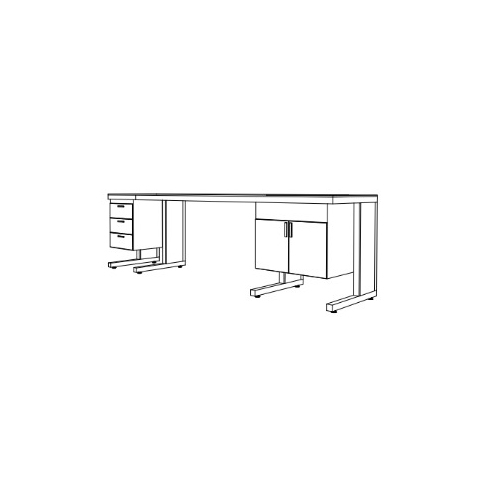Table of Contents
In the realm of STEM education, ensuring a safe learning environment is paramount. This guide delves into the critical safety standards and compliance requirements for educational lab furniture, providing essential information for educators, administrators, and facility managers.
Understanding the Importance of Lab Safety Standards
Safety in educational laboratories goes beyond mere regulatory compliance; it’s about creating an environment where students can explore, experiment, and learn without unnecessary risks. Proper lab furniture plays a crucial role in maintaining this safe atmosphere.
Key Organizations Setting Lab Safety Standards
SEFA (Scientific Equipment and Furniture Association): Establishes performance standards for laboratory furniture.
ANSI (American National Standards Institute): Oversees the creation and use of norms and guidelines across various industries, including education.
OSHA (Occupational Safety and Health Administration): Provides guidelines for workplace safety, applicable to educational settings.
Essential Safety Features in Educational Lab Furniture
Chemical Resistance
- Importance: Protects against spills and chemical reactions.
- Standard: SEFA 8 – Cabinet Surface Finish Tests
- Compliance: Choose furniture with certified chemical-resistant finishes.
Fire Safety
- Requirement: Furniture must meet fire resistance standards.
- Standard: ASTM E84 – Surface Burning Characteristics of Building Materials
- Implementation: Opt for materials with appropriate fire ratings.
Ergonomics and Accessibility
- Guideline: ADA (Americans with Disabilities Act) Standards for Accessible Design
- Compliance: Ensure workstations are adjustable and accessible to all students.
Electrical Safety
- Standard: UL (Underwriters Laboratories) Certification
- Application: All electrical components in lab furniture must be UL listed.
Compliance Checklist for Educational Lab Furniture
Material Safety Data Sheets (MSDS): Maintain updated MSDS for all furniture materials.
Regular Inspections: Schedule routine checks for wear, damage, or potential hazards.
Proper Installation: Ensure all furniture is installed according to manufacturer specifications.
User Training: Educate staff and students on the proper use of lab furniture and equipment.
Emerging Trends in Lab Furniture Safety
Smart Furniture Integration
- Feature: Built-in sensors for chemical detection and air quality monitoring.
- Benefit: Real-time safety alerts and improved environmental control.
Sustainable Safety Solutions
- Trend: Eco-friendly materials that maintain high safety standards.
- Impact: Reduced environmental footprint without compromising on safety.
Best Practices for Maintaining Compliance
Stay Informed: Regularly review and update knowledge of current safety standards.
Collaborate with Experts: Consult with safety professionals and certified lab planners.
Document Everything: Keep detailed records of all safety measures and compliance efforts.
Encourage Feedback: Create a system for students and staff to report safety concerns.
The Future of Lab Safety: Anticipating Changes
- Predictive Maintenance: Using AI to forecast potential safety issues before they occur.
- Virtual Reality Training: Implementing VR for immersive safety training experiences.
Conclusion: Prioritizing Safety in Educational Lab Design
Adhering to safety standards in educational lab furniture is not just about meeting regulations; it’s about creating an environment where learning can flourish without compromise. By understanding and implementing these standards, educational institutions can provide secure, efficient, and inspiring spaces for the next generation of scientists and innovators.
Remember, safety in lab design is an ongoing process. Stay vigilant, stay informed, and always prioritize the well-being of your students and staff.




